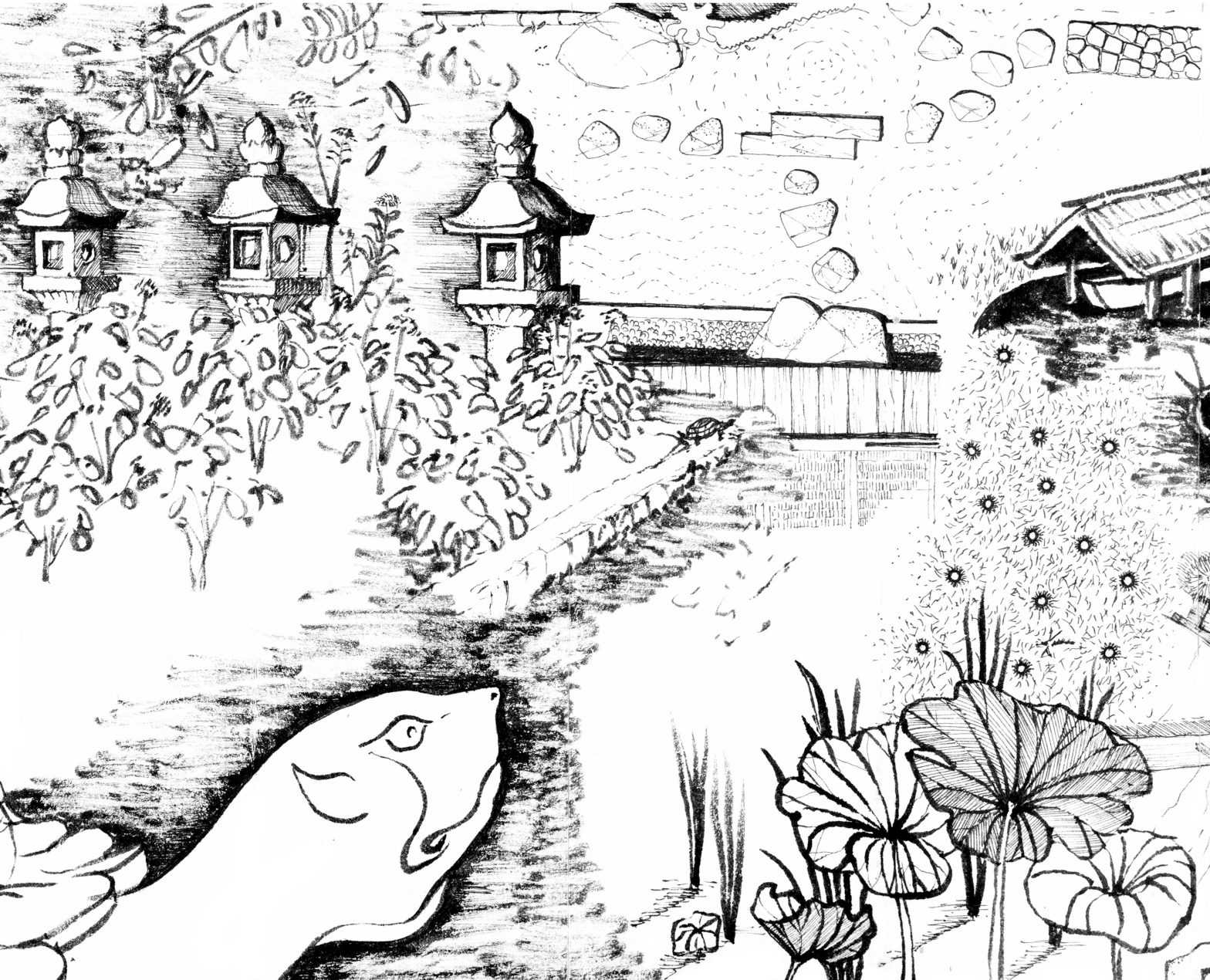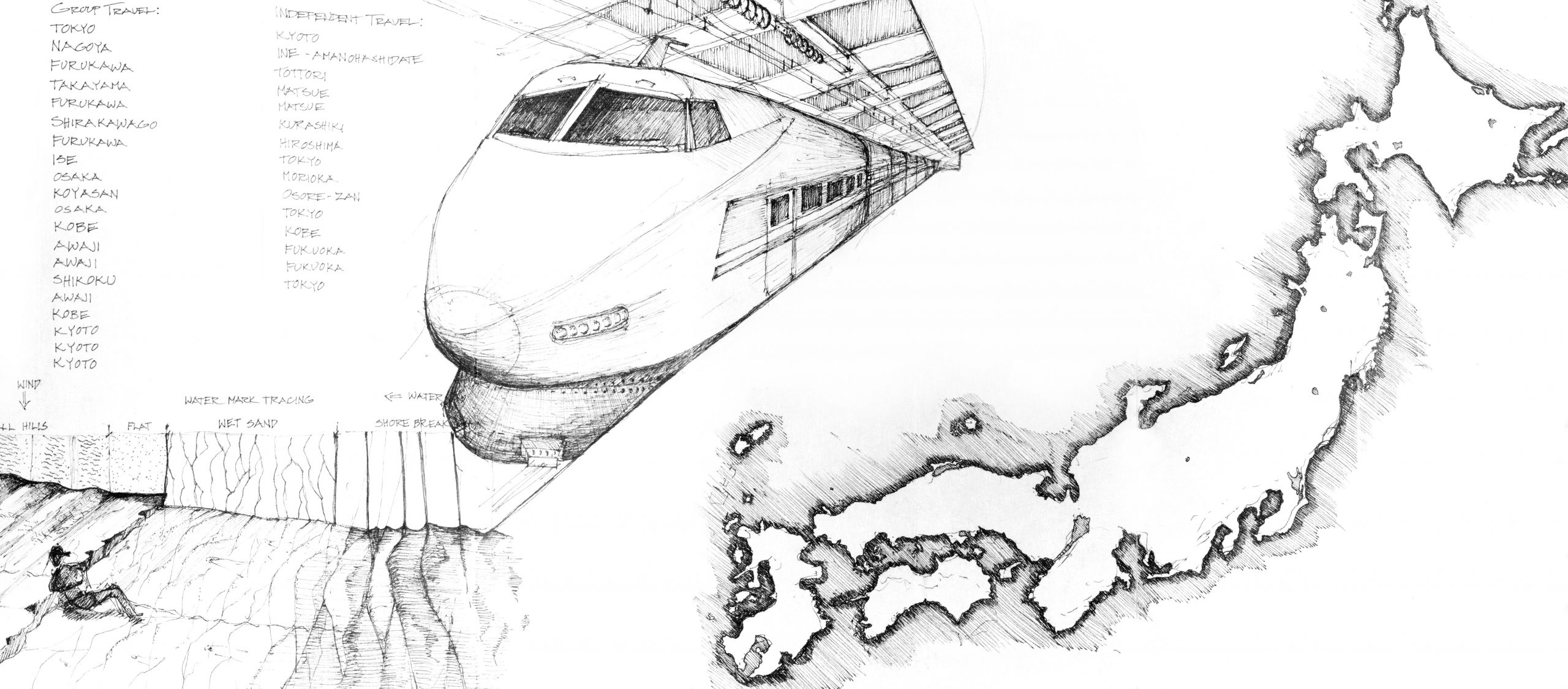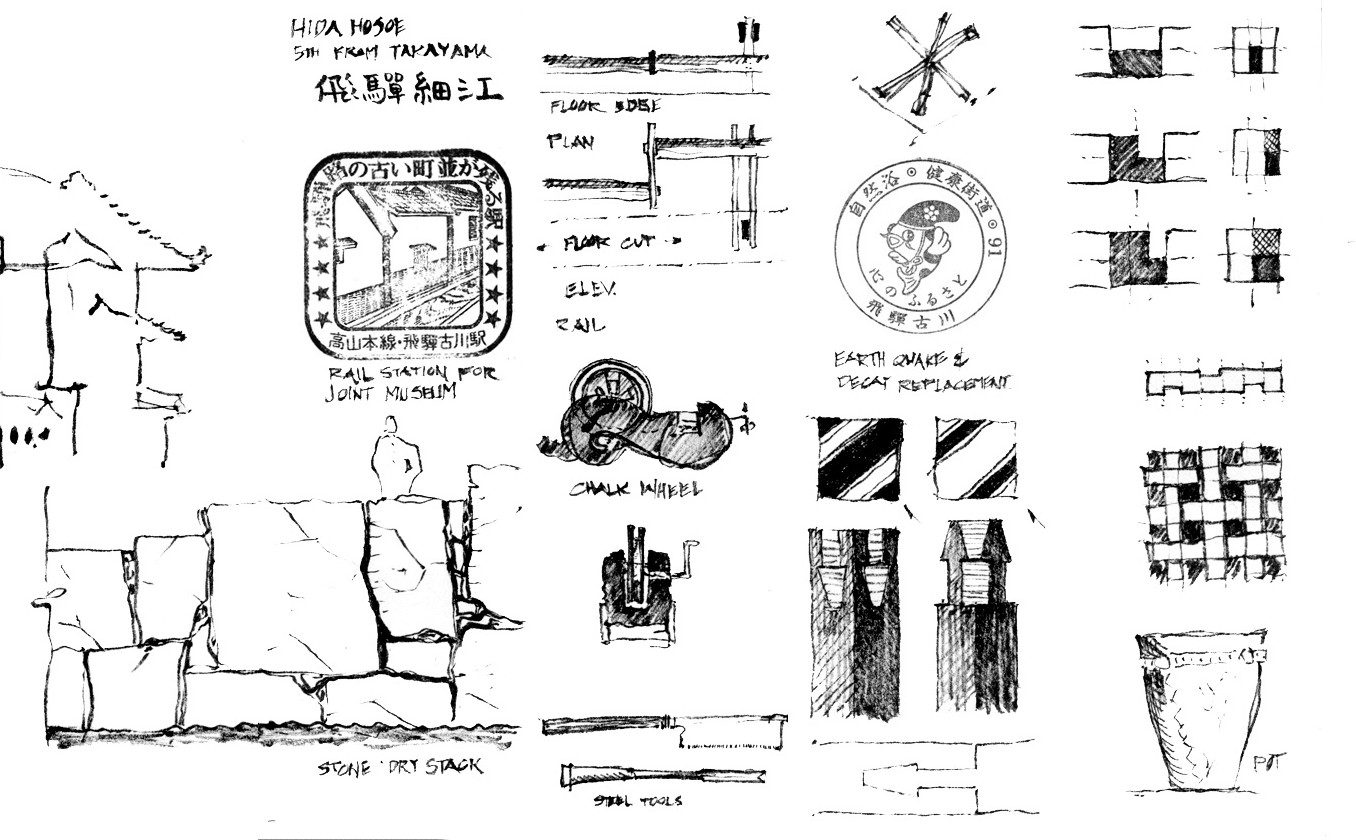5.27.Japan-6-detail-b Japanese rock garden Highlights Relevant to Sustainable Design:
Some solutions have elegance in their simplicity.
In the center, there is a Japanese rock garden with a pair of rectangular stepping-stones. They are set parallel to each other but offset. This simple design lets you know that you can go in either direction. I loved seeing the elegance of this solution. Going from indoors out, the transition from the tatami mats to the exterior includes a wooden perimeter and then a bed of stones before the raked pebble rock garden. The bed of stones holds the majority of the large stepping-stones and also catches the rain from the roof eave overhead. This transition is common in traditional Japanese architecture and creates a dynamic interconnection of interior and exterior space that is not binary. In sketchbook Islands 8: John’s Island Club—Vero Beach, Florida, I share more insight into this appealing shared relationship with nature. The appeal is based on the connectivity between indoor and outdoor spaces that links us as inhabitants to the natural environment rather than creating a wall between inside and outside space.
Author and illustrator: Charlie Szoradi is an architect, inventor, and the CEO of Independence LED Lighting. He writes about many other topics related to Japanese rock gardens through his extensive travels around the world.
If you have found this posting online, it is an excerpt from Mr. Szoradi’s book Learn from Looking that served as the inspiring seed content for this drawing share resource. For additional drawings and insights on the Japanese rock garden theme of interconnection to the natural environment, we hope that you enjoy exploring LearnfromLooking.com. You can search via general terms such as sustainability as well as narrower terms such as Japanese rock garden.
Pebble garden and Japanese rock garden design are environmentally friendly, because they naturally use less water than grass. Water consumption is becoming an increasing issue given the extensive use of water for irrigation in commercial farming and landscaping. The water, food, energy, security nexus is a growing concern, and Chapter 14 of the Learn from Looking book addresses solutions such as the “Perpetual Food Machine” that use 90% less water for vegetable cultivation. The system incorporates aquaponics, solar, and Light Emitting Diode (LED) technology. Some of the key information is available on this page that also includes testing report downloads: http://independenceled.com/led-grow-lights/




Japanese rock gardens were first developed during the h century and often mimicked the gardens of China’s Song Dynasty. Tiny lakes and islands covered with moss and precisely manicured grasses and shrubs combined with larger rocks and gravel beds intended to represent nature’s spirit on a more intimate scale.
YES!